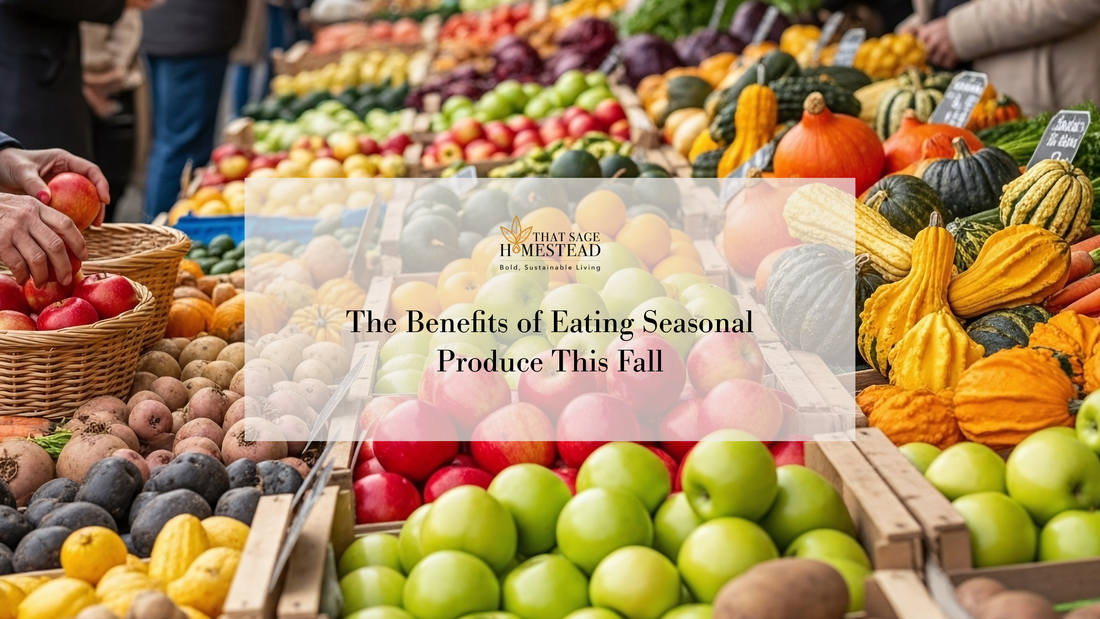As summer fades and the crisp air of fall settles in, nature provides us with exactly what our bodies need—hearty vegetables, sweet fruits, and nutrient-rich greens that thrive in cooler weather. Choosing to eat what’s in season isn’t just about flavor; it’s a mindful way to nourish your body, support the environment, and even save money.
Here’s why eating only seasonal produce makes such a difference, especially in the fall:
1. Better Nutrition
Seasonal produce is harvested at its peak ripeness, meaning it contains the highest levels of vitamins, minerals, and antioxidants. For example, fall staples like kale and Brussels sprouts are packed with immune-supporting vitamin C, just when your body needs it most.
👉 On the homestead: Growing your own fall crops like beets, carrots, and leafy greens ensures you’re eating them fresh from the soil, with all their nutrients intact.
2. Fresher, Better Flavor
When fruits and vegetables are grown in their natural season, they simply taste better. Apples are crisp and sweet in the fall, while squash and sweet potatoes take on a rich, earthy flavor that’s perfect for cozy meals.
👉 Homestead note: Harvesting pumpkins or squash from your own garden at just the right time gives a flavor no store-bought version can match.
3. Supports Your Health Naturally
Eating with the seasons helps your body stay in balance with nature. In fall, produce like squash, sweet potatoes, and apples offer grounding energy and hearty nutrition, preparing you for colder months ahead.
👉 Growing your own: Root vegetables and cool-weather greens thrive in fall gardens, providing a steady supply of nutrient-dense foods right from your backyard.
4. More Affordable
When produce is in season locally, it’s abundant—which means lower prices at markets and grocery stores. By eating what’s available, you’re not paying extra for fruits and vegetables that were shipped across the globe.
👉 Homesteading advantage: Storing crops like pumpkins, potatoes, and onions from your own harvest cuts down your grocery bill through the winter months.
5. Environmentally Friendly
Out-of-season produce often travels thousands of miles to reach store shelves, racking up a large carbon footprint. Seasonal eating reduces that impact, especially if you shop local or grow your own.
👉 Bonus for homesteaders: Eating what you grow is the most sustainable option there is—zero shipping, zero packaging, just fresh food straight from your land.
Closing Thought:
Eating seasonally isn’t just a trend—it’s a way of aligning with nature’s rhythms. Fall provides exactly what we need: hearty, grounding foods that nourish both body and soul. Whether you’re filling your basket at a local farmers’ market or harvesting directly from your homestead, choosing only what’s in season brings fresher flavors, better health, and a deeper connection to the earth.

